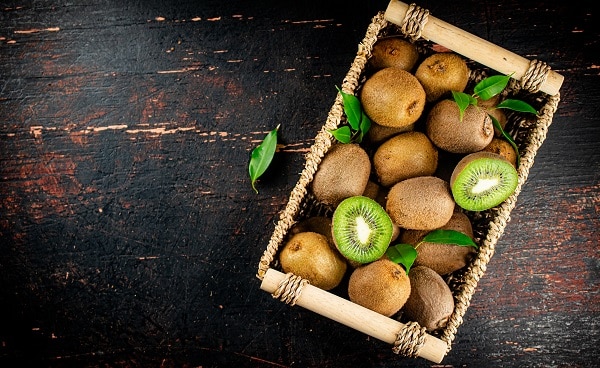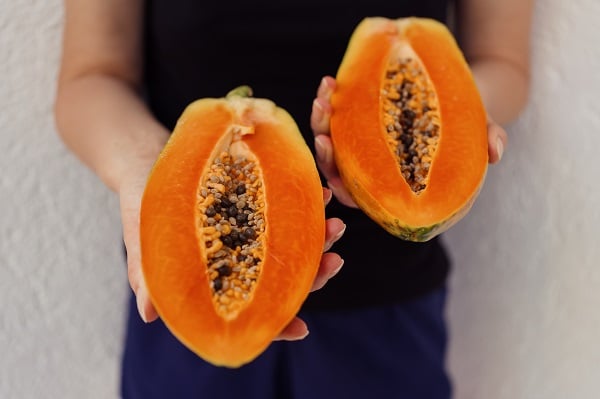Growing exotic fruits at home has become a popular hobby for many garden enthusiasts seeking to diversify their gardens with unique, flavorful, and visually appealing produce. This trend not only brings a piece of the tropics or foreign lands into one’s own backyard or balcony but also offers numerous benefits, including the nutritional value of the fruits, aesthetic enhancement of the living space, and the unparalleled joy of harvesting produce grown with personal effort. The following sections will delve into seven exotic fruits that can thrive in a home garden setting, providing a guide on how to cultivate these delicious rarities.
Contents
Dragon Fruit (Pitaya)
Dragon fruit, with its vibrant pink skin and speckled flesh, originates from the Americas but has gained popularity worldwide for its unique look and health benefits. It thrives in warm climates but can also be grown in pots in cooler areas, making it accessible for many gardeners. The key to successful dragon fruit cultivation lies in understanding its climatic needs, soil preferences, and water requirements. A well-draining soil mix, moderate watering, and plenty of sunlight pave the way for these cacti to produce their stunning fruit.
Successfully growing dragon fruit at home involves more than just planting a cutting; it requires patience and care. Regular monitoring for pests, adequate support for its climbing habit, and understanding the signs of nutrient deficiencies are crucial for healthy growth. Pollination is another important aspect, as some varieties require hand-pollination to bear fruit. With the right care, dragon fruit plants can not only become a beautiful addition to one’s garden but also a reliable source of this exotic treat.
Passion Fruit
Passion fruit is renowned for its aromatic flavor and nutritional benefits, making it a coveted addition to any garden. This vigorous vine prefers tropical or subtropical climates but can be grown in temperate regions with the right care. Starting with well-draining soil, a sunny position, and adequate support for its climbing tendrils, gardeners can embark on the rewarding journey of growing passion fruit. The plant’s ability to produce a bounty of fruit also depends on selecting the right variety that suits the local climate.
Caring for passion fruit vines encompasses a range of practices from regular watering to keep the soil moist but not waterlogged, to applying a balanced fertilizer to encourage growth and fruiting. Pest and disease management is equally important, as these vines can be susceptible to common garden ailments. Pruning not only helps maintain the plant’s shape and size but also promotes air circulation and sunlight penetration, which are vital for healthy growth and fruit production. With dedication, the garden can soon become a haven for these delicious fruits, ready to be harvested and enjoyed in a variety of dishes.
Guava
Guava trees are celebrated for their sweet, fragrant fruits and are surprisingly resilient, capable of adapting to a wide range of growing conditions. These trees can flourish in both tropical and subtropical climates, requiring minimal care once established. Key to successful guava cultivation is ensuring they’re planted in well-drained soil and receive ample sunlight, which promotes healthy growth and fruit production. Guavas are relatively drought-tolerant, but regular watering during dry periods will enhance fruit quality and yield.
When it comes to care, guava trees benefit from annual pruning to remove dead wood and encourage the growth of new fruiting branches. They are also relatively resistant to pests, though attention should be paid to prevent common issues such as fruit flies and guava rust. Fertilization is another critical aspect, with a balanced, slow-release fertilizer applied during the growing season to support their nutritional needs. With proper care, guava trees can provide an abundant harvest of fruit, perfect for eating fresh, juicing, or using in culinary creations.
Kiwifruit
Kiwifruit, with its unique combination of vibrant green flesh and tiny black seeds, offers more than just visual appeal and a tangy flavor. This fruit is packed with vitamins and antioxidants, thriving in temperate climates that experience mild winters. To successfully grow kiwifruit, gardeners need to ensure they have both male and female plants for pollination, as only the female plants bear fruit. Planting in a well-drained, acidic soil and in a location that receives full sun will promote healthy vines and maximize fruit production.
Caring for kiwifruit vines includes regular pruning to manage their vigorous growth and to ensure that energy is directed towards fruit production rather than excessive vegetative growth. This task, best performed in the winter while the vines are dormant, helps maintain the structure of the vine and facilitates easier harvesting. Kiwifruit vines also require consistent moisture throughout the growing season, particularly as fruits begin to swell. Mulching can help retain soil moisture and reduce weed competition. With dedication to these care requirements, the reward is a bountiful harvest of delicious kiwifruits.
Pomegranate
Pomegranates are known not only for their delicious, jewel-like seeds but also for their significant health benefits, including high levels of antioxidants. These drought-tolerant trees prefer hot and dry climates but can adapt to a variety of conditions, making them suitable for many gardeners. Planting pomegranates in well-drained soil and in a location that receives full sunlight is essential for encouraging robust growth and fruiting. While pomegranates can tolerate moderate water scarcity, regular watering during the fruiting period will improve fruit quality.
Pruning pomegranate trees is crucial for maintaining their shape, removing dead or diseased branches, and encouraging the growth of new fruiting wood. Pomegranates are relatively free from major pests and diseases, but monitoring and timely intervention can prevent minor issues from becoming significant problems. The trees also benefit from a balanced fertilizer applied in the spring to support their growth and fruit development. As the fruits ripen to a vibrant red and produce a hollow sound when tapped, they’re ready to be harvested and savored.
Mango
Mangoes, with their lush, tropical foliage and juicy, flavorful fruits, are highly sought after by gardeners wishing to add a taste of the exotic to their landscape. These trees thrive in warm, frost-free climates and require ample space to grow, making them ideal for larger gardens or as a statement piece in a spacious yard. Soil preparation is key, with mangoes preferring well-drained, fertile soil. Full sun exposure is necessary for optimal growth and fruit production, highlighting the importance of choosing the right planting location.
Caring for mango trees involves protecting them from cold temperatures, which may require covering or providing additional heat in cooler climates. Watering should be consistent but moderate, as mangoes are susceptible to root rot if overwatered. Pest and disease management is critical, with regular inspections to identify any potential issues early. Fertilization should be approached with care, providing the trees with the necessary nutrients without encouraging excessive vegetative growth at the expense of fruiting. With proper attention to these details, mango trees can produce an abundant crop of delicious fruits year after year.
Papaya
Papayas offer a tropical flair to any garden, with their large, palm-like leaves and succulent fruits that are packed with vitamins and enzymes. These fast-growing plants prefer warm climates and can bear fruit within a year of planting, making them a rewarding choice for gardeners looking to enjoy exotic flavors quickly. Papayas require well-drained soil, rich in organic matter, and a sunny location to thrive. Regular watering is essential, especially during dry periods, to keep the soil moist and encourage steady growth.
To ensure a bountiful harvest, papaya plants need to be monitored for pests and diseases, such as the papaya fruit fly and root rot, which can significantly impact fruit quality and plant health. Additionally, since papayas are sensitive to wind damage, providing windbreaks or planting in a sheltered location can help protect the plants. Fertilizing with a balanced, water-soluble fertilizer promotes healthy foliage and fruit development. When the fruits change color from green to yellow, they are ready to be harvested, offering a sweet, tropical treat straight from the garden.
The Bottom Line
Gardening enthusiasts drawn to the allure of growing exotic fruits at home will find that with the right knowledge and care, these plants can offer more than just unique flavors and nutritional benefits. They bring an element of adventure to gardening, transforming spaces with their diverse textures, colors, and aromas. While each fruit comes with its own set of requirements and challenges, the rewards of cultivating these exotic species are immense. By investing time and effort into their care, gardeners can enjoy the fruits of their labor in the most literal sense, harvesting fresh, flavorful produce that elevates culinary experiences and enriches their connection to the natural world.






